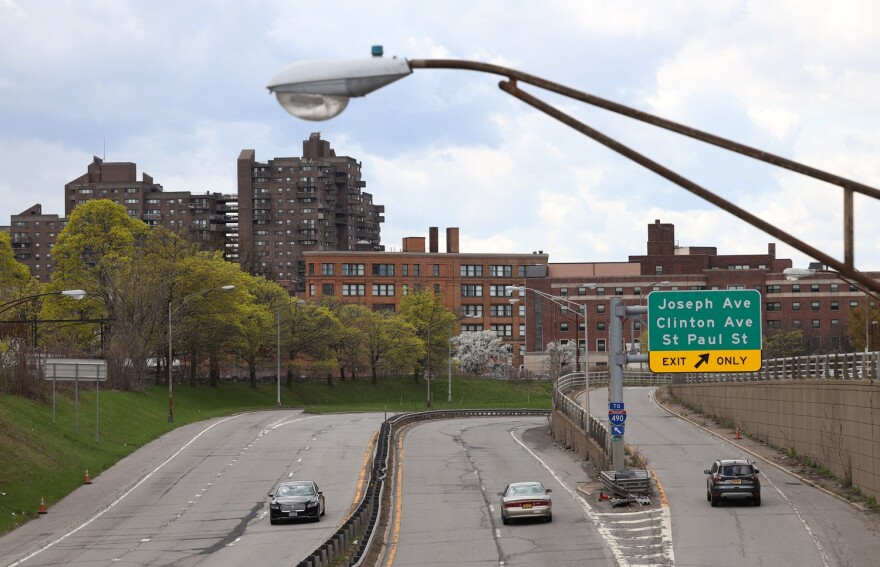The city of Rochester this week is rolling out its preferred concept to fill in the Inner Loop.
For the last few years, the city, Bergman Associates, Kimley Horn and several other firms have been conducting research and discussions on how to replace the 'C’ shaped 60-year-old highway. The highway encircles downtown Rochester. The eastern portion was filled in several years ago. Development on Inner Loop East properties is expected to continue for the next few years.
As for Inner Loop North, City of Rochester Manager of Special Projects Erik Frisch said they’ve settled on a concept called “Grid restoration” with a street design similar to what existed prior to the highway’s construction. Grid restoration was one of the initial concepts introduced to the public in June. Frisch said the idea would open a vast amount of real estate for green space, commercial and single-family housing while keeping a connection to Route 490. He stressed that both business leaders and residents wanted to keep access that highway.
“We’ve come up with a concept that provides that access to 490 while meeting the community’s goals of maintaining the connectively between these communities and downtown,” said Frisch after a community input session last Thursday. “This concept seemed to be the one that checked most of those boxes, seemingly more than the others.”
City Hall officials say they’ve taken input from about 500 residents, business owners and stakeholders on the issue. The outreach has included rounds of input meetings, several committees, and an aggressive mail campaign in both English and Spanish for residents and businesses in the neighborhoods that border the Inner Loop North.
City Council Vice President Willie Lightfoot will have a dual role in the project as a reelected council member and pastor of Prayer House, a church that sits a few feet from the Inner Loop. Whatever happens next, Lightfoot would like to see the city take a different path than the one they took with filling Inner Loop East which he described as full of businesses aren’t owned by minorities.
"I know the impact that putting (in) the Inner Loop has had on the community but I also know what happened on the other side is not the answer,” said Lightfoot. “What we see in Inner Loop (East) is lots of mixed-use, high-income rental property, that’s not the answer. If they’re saying that’s the model, that’s not the answer.”
He said he will use his role on Council to push for an equity-based approach with a focus on home ownership in one of the city’s most impoverished neighborhoods.
“The way out of poverty is ownership, period,” continued Lightfoot. “I own my home. I own my building. That’s how I got out of poverty. We have to put people into homes, single family homes. That’s what the community wants, that’s what we have to give them. Period.”
The latest estimates say the project would cost between $80 million and $90 million, about double what former Mayor Lovely Warren’s last estimate and on the low end of city estimates last spring.
The city expects the bulk of that money to come from the federal government. If approved and funded, this project would take more than half a decade to complete. More details on the project are expected in January.
A virtual public input session is scheduled for noon on December 6. Two in-person sessions are scheduled for Tuesday, December 7 at the YMCA Center for Equity at 1 p.m. and 6 p.m.



